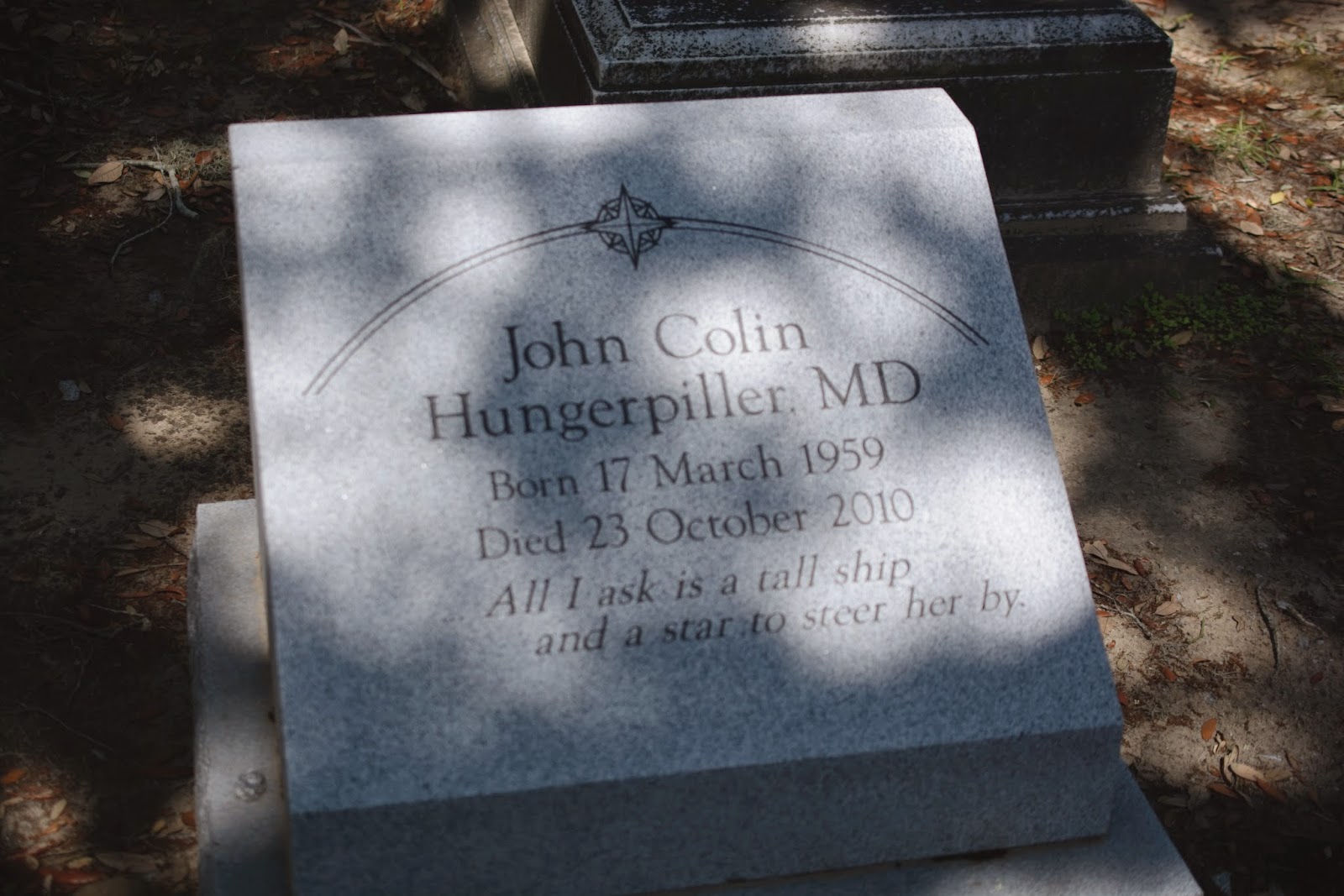The Lighthouse was the first "must-do" while here, and the second was visiting the famous Bonaventure Cemetery in Savannah.
Bonaventure became familiar to many folks across the country with the 1994 publication of the book "Midnight In the Garden of Good and Evil" by John Berendt. The cover of the book has a photo of the statuary, The Bird Girl with the cemetery in the background. The book was a bestseller about murder and murder trials in Savannah, and contained a great deal of local Savannah history and its characters.
Because of the notoriety of the book and the cemetery, the Bird Girl statue was moved to the Telfair Museum in Savannah, to insure its safety.
Walk with me, then through Bonaventure and its particular beauty. I'll keep still, as much as possible, while we stroll through this marvelous gothic place.
I found this fascinating, funny and sad; she is holding a string of Spanish Moss that has fallen from the tree.
Conrad Aiken was a novelist and poet. He was a recipient of the National Book Award, the Bollingen Prize for poetry, the national Medal for Literature, Poet Laureate for georgia and winner of the Pulitzer Prize for Literature. He also had a sense of humor as noted on his tombstone: Cosmos Mariner, Destination Unknown.
The good doctor, John Hungerpillar, a recent resident of the cemetery, used a portion of John Masefield's poem, Sea-Fever, to inscribe his tombstone. Look it up if you want to feel the love of the sea by those who live by it.
At what point does a tombstone become something more, something more akin to art than a mere stone in a cemetery? Maybe the answer is: when the stonemason is able to carve his name on the monument. Note the intimacy of the carving. The delicacy of the wreath is amazingly rendered.
I do not know anything about Gustave Ludwig Karow, who was a Captain in the Marine Corps. According to his stone, which, by the way, is a strikingly beautiful and simple creation, was almost 27 when he died.
The resting place of children is always unsettling. Lambs and angels holding lambs was symbolic of a child's death.
Strange in this place of stone delicacy, this big blocked rough-hewn cross seems like it should be in another cemetery.
Many stones here have this almost bed-like form. Some, like this one, also have what look like pillows. To me, it almost looks like an open grave.
This stone, that of John P. Wheaton, is adorned by the hat and belt of the Chatham Artillery unit which he commanded during the Civil War. he also served as mayor of Savannah for three terms beginning in 1876.
MORE ON MONDAY, COME BACK.






















Comments
Post a Comment